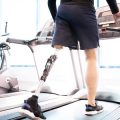Introduction to Multidisciplinary Teams in Rehabilitation
Multidisciplinary teams (MDTs) play a pivotal role in the delivery of rehabilitation services across the UK, both within the NHS and in private healthcare settings. An MDT brings together professionals from various specialties—such as physiotherapists, occupational therapists, speech and language therapists, psychologists, and doctors—who collaborate to provide holistic and patient-centred care. This collaborative approach ensures that all aspects of a patients recovery are addressed, leading to more effective outcomes. In the context of rehabilitation, where needs are often complex and multifaceted, MDTs are essential for tailoring treatment plans that reflect each individuals unique circumstances. Both NHS trusts and private providers recognise the value of multidisciplinary working, making it a central component of modern rehabilitation pathways. By pooling expertise and fostering open communication between different disciplines, MDTs help patients achieve the best possible quality of life following injury, illness, or surgery.
Core Professionals in Rehabilitation Teams
In the UK, both NHS and private rehabilitation providers assemble multidisciplinary teams (MDTs) to deliver holistic, patient-centred care. The make-up of these teams is carefully considered to ensure each individual’s unique needs are addressed throughout their rehab journey. MDTs typically comprise several core professionals, each contributing specialist expertise and collaborating closely for optimal outcomes.
Key Healthcare Professionals in UK Rehab Teams
| Professional | Main Role | Typical Interventions |
|---|---|---|
| Physiotherapist | Restores movement and function following injury, illness or disability | Exercise prescription, manual therapy, mobility training, education |
| Occupational Therapist | Supports people to achieve independence in daily activities | Activity analysis, adaptive equipment provision, environmental modifications |
| Speech and Language Therapist | Assesses and treats speech, language, communication, and swallowing difficulties | Communication strategies, dysphagia management, voice therapy |
| Rehabilitation Nurse | Delivers nursing care within a rehab context and coordinates between services | Medication management, wound care, patient education |
| Clinical Psychologist/Neuropsychologist | Addresses cognitive, emotional and behavioural aspects of recovery | Cognitive assessments, psychological therapy, coping strategies |
The Importance of Collaboration
A hallmark of UK-based rehabilitation is the collaborative nature of MDTs. Regular team meetings—often termed ‘case conferences’—enable professionals to share insights and jointly tailor care plans. This approach not only streamlines service delivery but also ensures patients benefit from a cohesive treatment plan that considers every aspect of their health and wellbeing.
Additional Allied Health Professionals
Depending on individual needs and the complexity of cases, MDTs may also include dietitians, social workers, prosthetists/orthotists, and pharmacists. Each brings further expertise to address nutritional needs, social support systems, mobility aids or medication optimisation. This dynamic team structure reflects the NHS’s commitment to truly comprehensive care—and is mirrored by leading private providers across the UK.

3. How the NHS Structures Multidisciplinary Teams
The National Health Service (NHS) in the UK has a longstanding tradition of delivering rehabilitation through multidisciplinary teams (MDTs), which are carefully structured to ensure patient-centred, holistic care. These MDTs bring together professionals from various backgrounds, such as physiotherapists, occupational therapists, speech and language therapists, psychologists, social workers, and specialist nurses. Each member contributes unique expertise, guided by national frameworks and evidence-based best practices.
NHS Guidelines for Team Organisation
The NHS follows comprehensive guidelines laid out by bodies such as NICE (National Institute for Health and Care Excellence) and the Royal Colleges. These guidelines outline the recommended composition of MDTs for different rehabilitation needs – whether neurological, musculoskeletal, or post-acute care. The guidance ensures that every patient receives support from the right mix of professionals at each stage of their rehab journey.
Defined Roles within MDTs
Within an NHS rehabilitation MDT, each role is clearly defined to avoid duplication and maximise effectiveness. For example, while a physiotherapist focuses on mobility and physical function, an occupational therapist addresses practical skills needed for daily life. Speech and language therapists manage communication or swallowing difficulties, while clinical psychologists may assist with cognitive or emotional challenges arising from injury or illness. Regular team meetings facilitate information sharing and coordinated goal-setting.
Collaborative Processes Unique to the NHS
Collaboration is central to the NHS approach. Weekly or fortnightly MDT meetings are standard practice, allowing professionals to review patient progress collectively and adjust treatment plans as needed. Electronic health records are used for seamless communication between team members and across care settings. Importantly, patients and their families are actively involved in discussions about their rehabilitation goals and preferences—an essential aspect of British healthcare values.
In summary, the NHS model for structuring multidisciplinary teams is built on strong collaborative foundations, clear role definitions, adherence to national guidelines, and a commitment to integrating patient voices into every stage of rehabilitation.
4. Approaches Taken by Private Rehabilitation Providers
Private rehabilitation providers in the UK have developed distinct approaches to assembling and managing multidisciplinary teams, often reflecting both flexibility and innovation compared to traditional NHS models. These private organisations typically operate with a greater degree of autonomy, allowing them to tailor their team composition and service delivery to meet the specific needs of their client base.
Flexibility in Professional Roles
One of the hallmarks of private sector rehabilitation is the ability to adapt professional roles more fluidly. Private providers can recruit a broader range of specialists—including physiotherapists, occupational therapists, speech and language therapists, psychologists, and case managers—according to individual patient requirements. The decision-making process is less bound by rigid frameworks, enabling quicker adjustments to team composition as needs evolve.
Key Differences from NHS Models
| Aspect | NHS Model | Private Provider Model |
|---|---|---|
| Team Formation | Guided by set protocols and national guidelines | Customised based on patient profile and provider expertise |
| Role Flexibility | Defined job descriptions; limited cross-role flexibility | Greater overlap of responsibilities; agile adaptation to caseloads |
| Recruitment | Centrally managed, longer onboarding processes | Direct recruitment; rapid onboarding possible |
| Pace of Change | Slower due to governance structures | Faster innovation and response times |
| Service Range | Core services prioritised for population need | Bespoke services including complementary therapies |
Managing Multidisciplinary Teams in the Private Sector
The private sector’s management style often emphasises collaboration and open communication. Regular case conferences, digital records sharing, and patient-centred planning are standard practice. Teams may also integrate additional professionals such as vocational counsellors or personal trainers when appropriate. This approach ensures that rehabilitation remains holistic and truly tailored, supporting patients’ physical, emotional, and social goals in a way that aligns with their lifestyle and preferences.
5. Collaboration and Communication in the UK Context
Effective collaboration and communication form the backbone of multidisciplinary team (MDT) practice within both NHS and private rehabilitation services across the UK. British healthcare culture places a strong emphasis on patient-centred care, mutual respect among professionals, and inclusivity in decision-making. MDT members—including physiotherapists, occupational therapists, speech and language therapists, nurses, doctors, psychologists, and social workers—work together closely to ensure that every aspect of a patients rehabilitation is considered holistically.
Sharing Information Responsibly
Within UK rehab settings, regular team meetings are standard practice, where clinicians discuss patient progress, update care plans, and address any challenges collaboratively. There is a clear protocol for sharing information: all communications must comply with NHS confidentiality standards or relevant data protection laws in private care. Electronic health records facilitate timely information exchange while safeguarding patient privacy—a key concern for British patients.
Involving Patients and Families
A defining feature of UK rehabilitation teams is their commitment to involving patients and their families at every stage of the recovery journey. MDTs are expected to engage patients as active partners by seeking their input on treatment goals and preferences. Family members are encouraged to attend meetings or therapy sessions when appropriate, ensuring that decisions reflect not only clinical perspectives but also the values and wishes of those receiving care.
Navigating Cultural Nuances
British culture often values politeness, discretion, and consensus-building. MDTs reflect these qualities by fostering an environment where every professional’s opinion is respected, and disagreements are handled diplomatically. Open dialogue is encouraged but always balanced with sensitivity to personal boundaries—something particularly important when discussing complex or emotionally charged issues with patients or relatives.
Empowering Patients Through Shared Decision-Making
The NHS Constitution enshrines the principle that “no decision about me without me,” making shared decision-making not just a best practice but an expectation. Private providers follow suit to meet client expectations and regulatory standards. This collaborative approach helps build trust between patients, families, and professionals—ultimately leading to better engagement in therapy and improved outcomes.
In summary, collaboration and communication within UK rehab MDTs are shaped by robust structures for teamwork, legal requirements for information sharing, cultural norms of inclusion and respect, and a steadfast commitment to putting patients at the heart of every decision.
6. Challenges and Opportunities in Assembling Effective Teams
Building and maintaining multidisciplinary teams in rehabilitation is crucial for delivering high-quality patient-centred care, yet both NHS and private providers across the UK encounter a range of obstacles in this process. Resource limitations are among the most commonly cited challenges. Within the NHS, budget constraints can restrict recruitment, leading to shortages of key professionals such as physiotherapists, occupational therapists, and speech and language therapists. Private providers may face similar issues, particularly when operating in areas with a limited pool of qualified specialists or when needing to balance costs against patient affordability.
Another significant challenge involves coordinating team members who may work across multiple locations or have differing contractual arrangements. For instance, agency staff and part-time professionals might not always be available for every case discussion or intervention, making continuity of care more complex. Furthermore, differences in training backgrounds and clinical approaches between NHS and private sector practitioners can sometimes result in misaligned expectations or communication barriers within teams.
To overcome these challenges, both sectors have adopted several effective strategies. One approach is the use of flexible staffing models, including job-sharing and rotational posts, which help optimise workforce capacity while supporting professional development. Investment in digital tools—such as secure messaging apps and electronic health records—has also improved communication among team members, ensuring that important information is accessible to everyone involved in a patient’s care journey.
Regular multidisciplinary team meetings, whether face-to-face or virtual, are now standard practice. These meetings foster collaborative decision-making and give all professionals an opportunity to share insights from their respective fields. Additionally, many organisations encourage continuous professional development (CPD) activities tailored specifically to multidisciplinary working, helping bridge any gaps in knowledge or practice styles between NHS and private clinicians.
Ultimately, while resource limitations and logistical complexities are ongoing challenges, the commitment to innovative solutions and collaborative culture continues to drive improvements in how rehab teams are assembled across the UK. By sharing best practices between sectors and focusing on patient outcomes above all else, both NHS and private providers can ensure that each individual receives holistic support from the right mix of professionals.
7. Conclusion: Best Practices for Multidisciplinary Rehab in the UK
Bringing together the right professionals for multidisciplinary rehabilitation is a cornerstone of effective patient care within both NHS and private settings across the UK. The most successful rehab teams are built on clear communication, shared goals, and a truly collaborative approach that puts patient outcomes at the heart of every decision.
Summary of Effective Approaches
Key to assembling strong multidisciplinary teams is a well-structured recruitment process that balances clinical expertise with interpersonal skills. Both NHS and private providers benefit from fostering open dialogue between physiotherapists, occupational therapists, speech and language therapists, psychologists, nurses, and medical consultants. Regular team meetings, joint goal-setting sessions with patients and families, and ongoing professional development are essential practices seen in leading UK rehab centres.
Practical Recommendations for Patients and Families
If you or a loved one are entering rehab, don’t hesitate to ask about the composition of your care team. Request introductions to each member and understand their roles in your recovery journey. In the UK, it’s also helpful to familiarise yourself with local patient advocacy groups or charities that can offer additional support and guidance throughout your rehabilitation.
Advice for Providers
For NHS trusts and private clinics alike, investing in staff training focused on teamwork and communication pays dividends in patient satisfaction and outcomes. Encourage interdisciplinary learning opportunities and provide channels for feedback from both staff and patients. Embrace technology where appropriate to facilitate coordination—such as shared digital records—while maintaining a personal touch so valued in British healthcare.
A Collaborative Future
The future of rehabilitation in the UK relies on adaptive, patient-centred teams who work across traditional boundaries. By prioritising collaboration, continual education, and transparent communication with patients and their families, both NHS and private providers can ensure that their multidisciplinary teams deliver world-class rehab tailored to individual needs.


